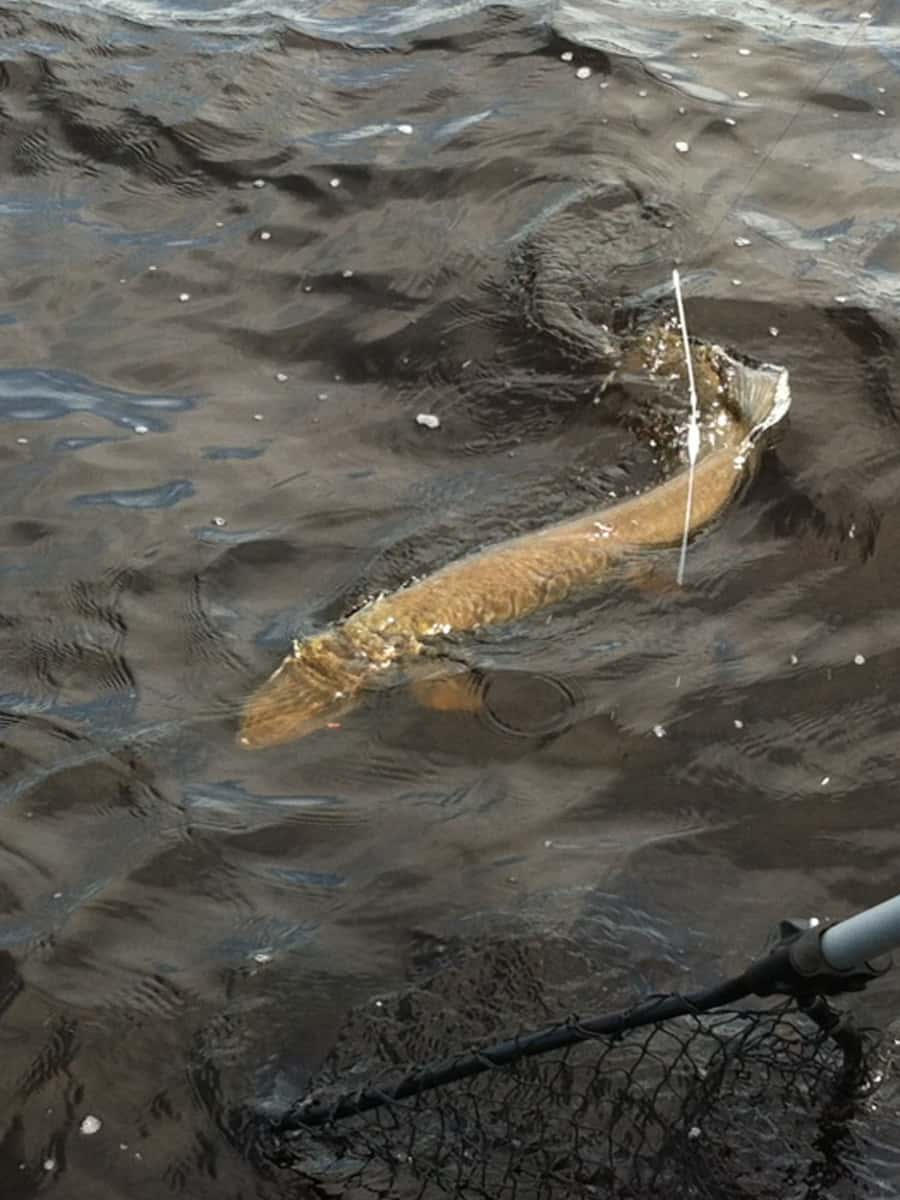
Muskies provide excitement for the dedicated cadre of anglers that chase them as well as a unique encounter for anglers who are just looking for something amazing on the other end of the line. Simonson Photo.
By Nick Simonson
The middle stretch of summer often provides good opportunities for the muskellunge, one of the region’s most challenging sport fish to catch, known for its frustrating follows which only sometimes result in exciting boat-side strikes.
While stretches of northern Wisconsin and Minnesota’s border waters and those flows in lakes country sport some of the most well-known muskie fishing sites, North Dakota provides a select number of lakes that hold the chance for anglers to not only hook and land the fish of 10,000 casts with a little less effort, but also an opportunity at some mature fish that could threaten the state record. With the recent expansion of stocking efforts, and solid populations established in historical muskie waters in the state, anglers can bring the heat for these mysterious members of the esox family as summer settles in.
“The tried and true lake that we’ve been stocking for decades is New Johns Lake and the entire McClusky Canal, the Garrison diversion unit with includes West Park Lake, East Park Lake, Heckers and New Johns,” says Scott Gangl, Fisheries Management Section Leader for the North Dakota Game & Fish Department (NDG&F), “we’ve been stocking them there for a long time, and that’s probably your best shot because those fish that are in there are going to be older and bigger than most of the newer lakes we’ve been stocking in recent years,” he continued.
It’s there on New Johns Lake that the state record muskie – a 54-inch, 46.5-pound specimen landed by Cory Bosch 13 years ago – came from, and likely the next one resides. The NDG&F has received the occasional entry over the past decade or so from that system which that threatens the record, but nothing that has eclipsed the top spot. Part of this is owed to the catch-and-release mentality of the dedicated muskie angling crowd putting back would-be records and the other part is due to the rare trophy regulation in place protecting muskies in the state.
“There is a catch-and-release mentality that’s always permeated throughout the muskie fishing world that catching and releasing is good for the fish,” Gangl explains, “we don’t have trophy regulations in North Dakota for most species, but the muskie is one where they have to be a 48-inch minimum in order to harvest the fish, so it’s a catch-and-release regulation for most sizes of fish out here,” he concludes.
In addition to the lakes in the central portion of the state, the NDG&F has expanded stocking efforts into other waters including Lake Ashtabula and smaller lakes in the northeastern corner of the state like Whitman and Larimore Dam. These smaller waters have abundant forage, in the form of white suckers, along with good water quality and varied habitat, and as the stockings take hold, will provide options for not only the die-hard muskie angler but also for the casual angler looking for an opportunity to catch a big fish.
“It’s a small but very dedicated group of muskie anglers – people who target muskies and want us to stock muskies – that were the impetus for us stocking places like Lake Audubon and expanding our muskie program a few years ago,” Gangl explains, “but we’ve also got the general public who don’t care if they catch a muskie, a pike or a walleye, most of them are fishing for walleye and we still want to provide an opportunity or diversity for them,” he concludes.
While they’ve fallen out of favor with he big fish crowd in recent years, tiger muskie options still exist across the state as well as a result of when supplies of pure muskies for stocking are disrupted or a faster-growing option is desired by the agency in its effort to provide those diverse fisheries with a unique species to fish for. One of the oldest records in North Dakota, the impressive 45-inch, 40-pound tiger muskie – a cross between a northern pike and a pure strain muskellunge – caught in 1975 is one that will be difficult to break, as only a few waters exist where such large hybrids may still be lurking.
“That’s a 40 pound tiger muskie and we see our tiger muskies and they grow fast but not get as big as pure muskies and that fish back then was an exceptional fish and I would say that one is going to stand for quite some time” Gangl projects, adding that “it’s one of those fish that brings doubt into your mind, but I went back to the 1975 or 76 edition of North Dakota Outdoors magazine and there’s a picture of it in there, and it looks like a tiger, it’s a big fish.”
